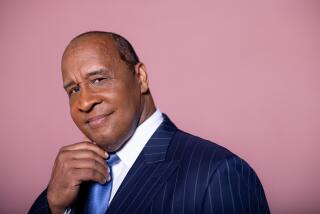Detroit Mayor Departing on a High Note
DETROIT â Mayor Dennis Archer wonât talk about his legacy as he leaves office after eight years, but his fingerprints are on three casinos, two ballparks, two major corporate headquarters relocating downtown and a contract to host the 2006 Super Bowl.
Monday is the last day in office for the former state Supreme Court justice, who in 1994 became the second black mayor of the nationâs 10th-largest city.
Archer, who turns 60 on New Yearâs Day, is being succeeded by Kwame Kilpatrick, 31, who is also black. He is the cityâs youngest elected mayor since 1838.
Archer campaigned on a vision of turning the city around, and some community leaders say he succeeded in laying the foundation for that to happen.
According to city records, Detroit has attracted more than $13 billion in new investment since January 1994.
The Tigersâ new baseball stadium, Comerica Park, opened in 2000. The Lionsâ neighboring football stadium, Ford Field, is slated to open for the 2002 season. Three casinos have opened: MGM Grand Detroit, MotorCity and Greektown.
The abandoned, downtown Hudsonâs department store building was demolished, paving the way for what will be Compuware Corp.âs new $550-million headquarters. General Motors Corp. moved its headquarters to the Renaissance Center.
Archer also set the tone for neighborhood revitalization, said psychologist Vincent Murray, the executive director of Bagley Housing Assn., which supports real estate development and community revitalization.
âHe brought some hope that things could happen,â Murray said.
However, the city still has approximately 10,000 abandoned, open and dangerous buildings, and pothole-riddled streets desperately need repairs.
Census figures released last spring show Detroitâs population fell below 1 million for the first time in 80 years, falling 7.5% in a decade to 951,270 residents.
It has the nationâs second-largest black population at 82.8%. Unlike his predecessor, Coleman Young, Archer is also credited with building bridges with the mostly white suburbs.
But community activist Ernest Johnson said blacks were neglected while Archer attempted to rebuild the city.
âIâm happy heâs gone,â Johnson said. âThe best Christmas we can have is him packing up and getting out of there. Archer did not do anything for the neighborhood.â
However, Archer was elected to his second term in 1997 with 83% of the vote.
âHe did a lot to increase our exposure and allow us to be better known as an important part of Detroitâs ethnic mosaic,â said Carlos Borrego, president of the Hispanic Business Alliance, a social networking business organization. In the 2000 census, about 5% of Detroit residents identified themselves as Latino.
Borrego hopes Kilpatrick will continue Archerâs efforts.
âI think if he continues this desire to be connected, by all means, he will build upon what Archer started and stand on his shoulders in that regard,â Borrego said.
Kilpatrick, a former All-America football player, was the first black elected to lead a political party in the state Legislature, serving as House Democratic leader.
Kilpatrick is no stranger to politics. His father, Bernard Kilpatrick, is chief of staff to the Wayne County executive and is a former Wayne County commissioner; his mother is U.S. Rep. Carolyn C. Kilpatrick. He was first elected to the state House in 1996, taking the spot vacated by his mother.
âHe is first of all a quick study. . . . He quickly consumes and digests information,â said state Rep. Lamar Lemmons, a Detroit Democrat. âIâm impressed by his ability to build coalitions, both across racial and party lines.â
Archerâs next challenge will be as chairman of a Detroit law firm in which he was a partner before his election as mayor in 1993. And he is in line to be nominated as the first black to lead the American Bar Assn.
More to Read
Get the L.A. Times Politics newsletter
Deeply reported insights into legislation, politics and policy from Sacramento, Washington and beyond. In your inbox three times per week.
You may occasionally receive promotional content from the Los Angeles Times.










